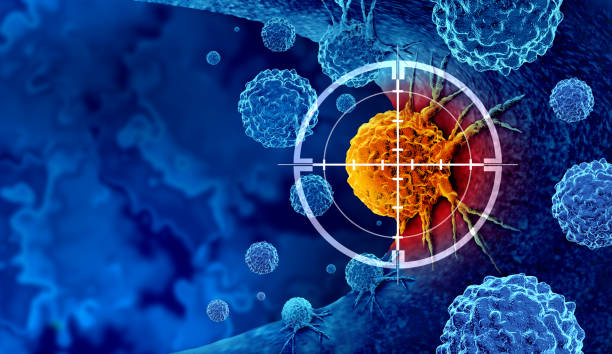Cancer is a disease that results from the growth of malignant cells anywhere in the body. Some cancers can cause cells to grow and divide at a slower rate, while others can cause cells to grow at a very rapid pace. At the same time, some types of cancer can also cause visible growth called tumours, while others do not.
The abnormal cells can infiltrate healthy cells, and every kind of cancer is named after the tissues they originate from; for example, a malignant tumour in the breast is called breast cancer.
Most of the body’s cells have a lifespan, so they grow old, die and get replaced with new ones, but cancerous cells do not die naturally. They keep growing and even grow over other healthy cells or tissues; also, they can spread to other areas of the body via lymph nodes and even travel to a distant area to infect the area.
Cancer cells proliferate unhindered because they do not rely on nutrition and blood supply from the normal blood vessels in the body; instead, they send out signals known as angiogenic factors. These signals tell your body to build new blood vessels for the cancerous cells to get all the nutrients and oxygen they need to develop rapidly.
Cancer is not just a disease for humans; it also affects animals and other living things.
Causes of Cancer
Cancer results from a mutation in the genes that control cell activities and causes the development of abnormal cells. It is sometimes an inherited gene mutation and, most times, an acquired gene mutation.
So, there isn’t any specific cause of cancer, but there are things you do that can increase your risk of developing cancer later in life. Some of the factors include:
- Smoking.
- Exposure to environmental toxins such as radon, pesticides, and asbestos.
- A diet that contains high sugar.
- Lack of exercise.
- Hormone therapy.
- Radiation exposures.
Symptoms of Cancer
Cancer is a highly complex disease; you may not notice any symptoms, and sometimes, when you start seeing signs, it worsens very quickly. At the same time, having some symptoms doesn’t exactly mean you have cancer, so you need a proper diagnosis to confirm.
Some of the symptoms include:
- Chronic tiredness
- Unexplained weight loss.
- Night fever.
- Persistent pain.
- Skin changes (moles or warts that change colour, shape and size).
- Sore throat that doesn’t heal.
- Difficulty breathing.
- Lumps under your skin, bruising and bleeding easily.
- Difficulty swallowing.
- Nagging cough.
Treatment
There are different approaches to treating cancer; sometimes, multiple options are combined based on the patient’s condition. The common treatment methods for cancer include:
- Radiation therapy to kill cancer cells with high radiation.
- Surgery to remove cancerous tumours that haven’t spread.
- Immunotherapy stimulates the immune system to fight cancer.
- Bone marrow transplant or stem cell transplant to replace damaged stem cells with healthy ones.
- Hormone therapy to block cancer-causing hormones.
- Targeted therapy to target and treat the specific genetic mutation which turns healthy cells into cancerous cells.
- Biological response modifier therapy: to engage the immune system for more effective performance.
- Chemotherapy: This involves using drugs to destroy cancer cells or to shrink the cells before surgery.



